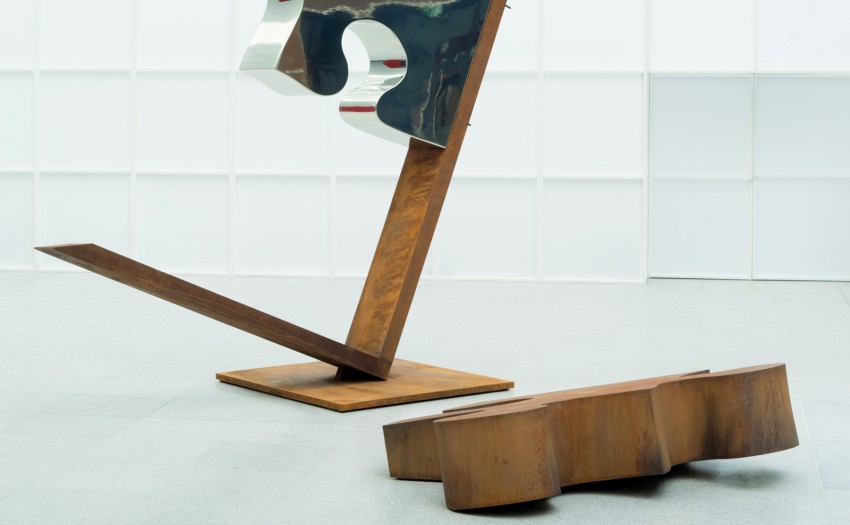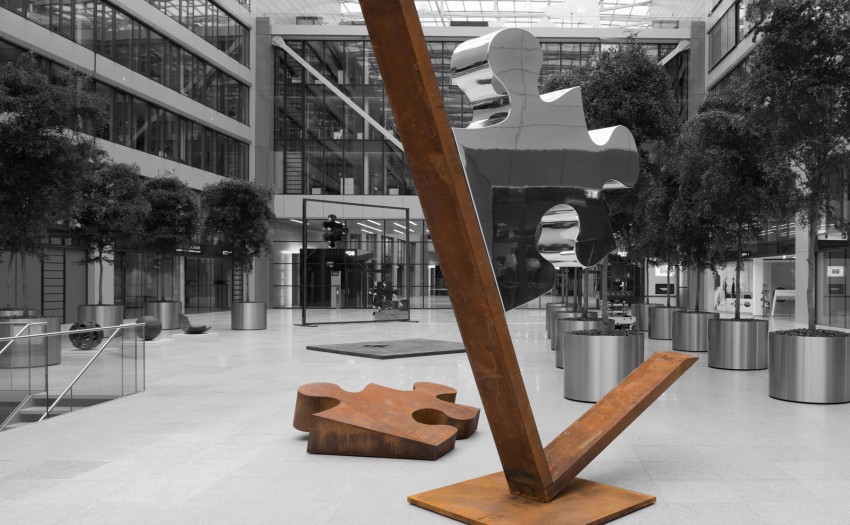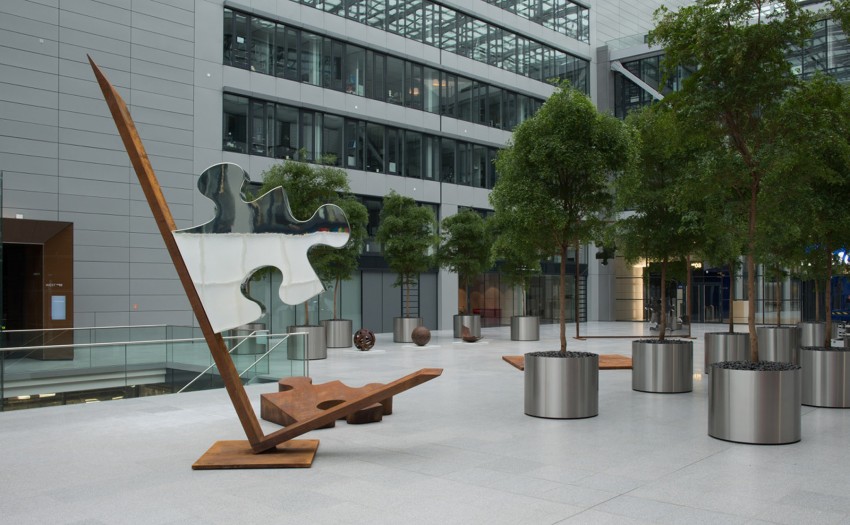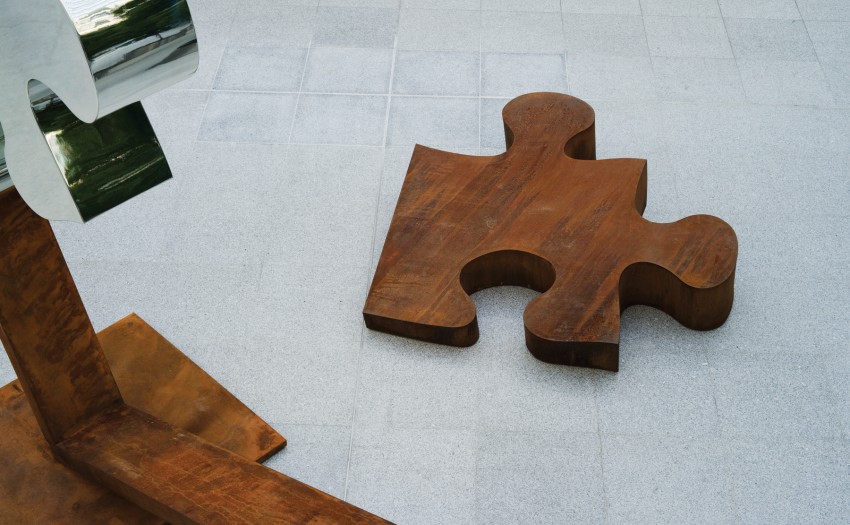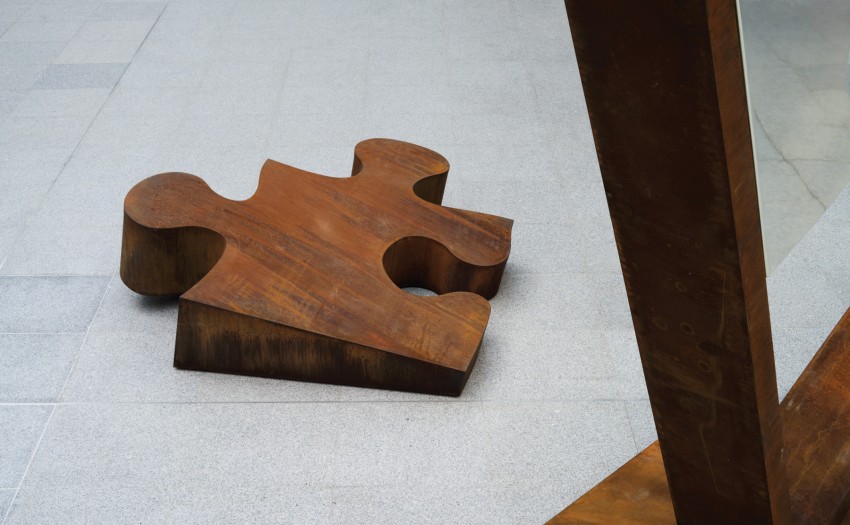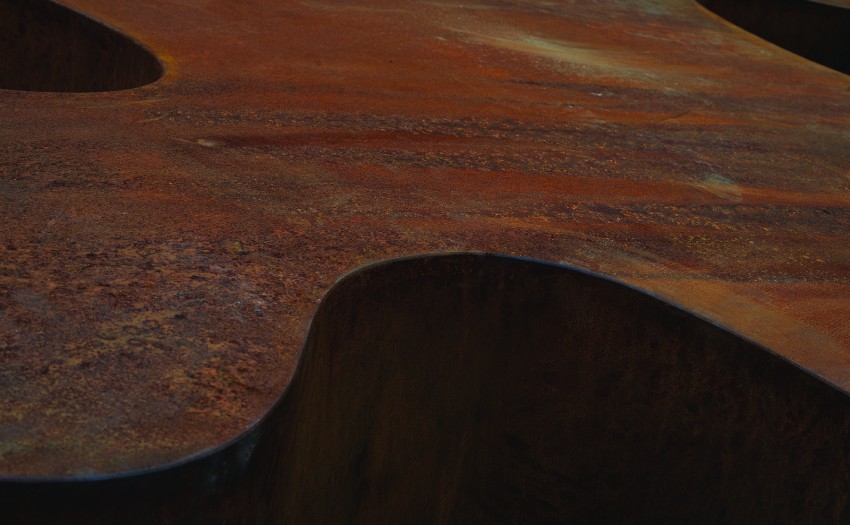Earthbound Heavenward
Erdenschwere
Schweißkonstruktion aus massiven Stahlplatten
2m x 2m x 0,6m
optische Masse 7,5 Tonnen
Korrodierte Oberfläche
Himmelsnähe
Schweißkonstruktion aus massiven Stahlplatten
3,5m x 5,1m
optische Masse 11 Tonnen
Hightech Silberverspiegelung und Rost
The second element of the series "THE MISSING PIECE" - called ‘Earthbound, Heavenward’ - is a tilted right-angle open at the top, stretching upwards to an infinite, almost empty space. Its title, and the upstretched arms of the angle, point towards the ethereal, towards a striving into the ‘radiant infinite’, to use Wolf’s phrase. ‘Does it have boundaries or not? There is no answer to this in the work.’ This open quality is in deliberate contrast to the closed form of the ‘Longing’ square. A single, highly polished ‘Missing Piece’ rests balanced on the rusted frame of the angle. Because its curves and indentations hang in empty space there is no natural partner, no kindred spirit, no place into which it can fit, and thus there are further ‘Missing Pieces’. This one material piece demonstrates the apparent absence of any other parts – perhaps no longer present or not yet present, or simply uncountable – playing potentially with infinity. Instead of the absent partner, the shining and floating ‘Missing Piece’ has the ‘Earthbound’ for its counterpart … the same size, but rusty and lying half sunk into the ground. This duality of the floating and the fixed, of the brilliantly polished and the rusty, represents for Wolf a more proper order. It is an ordering not only of space but also of time, as in Wagner’s ‘Parsifal’ – ‘Here, Time becomes Space’. For Wolf it is the opposite. The spatial structure raises questions about Time. ‘One part on its own is a meaningless concept, it cannot exist. Its form requires that there must be others,’ he says in explaining the two ‘Missing Piece’ parts of the sculpture. The polished part is heavenward, light, immaterial and seemingly timeless. At its feet is the earthbound one, rusting and in the ground – its shape and size exactly the same and yet the absolute opposite. It too is heavenward but on another part of the same timeline. Is it the past, the origin, before the age of polishing? Or is it the future, the regression of the heavenward back towards the rusty? The central issue of this work is Time.’

